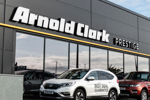According to the BCA Used Car Market Report 2005, produced with Sewells Information and Research, used car sales fell 5.2%, taking the market back below 7m (6.8m, the third lowest over the past 10 years). The value of the market, however, was £30bn, the second highest on record behind 2003 (£32bn). It suggests rising consumer demand for higher value cars, borne out by sales figures in the nearly new (0-2 years old) sector, where volumes rose 600,000 to 1.03m.
Dealers were forced to put greater focus and resources into their used car operations as the new market fell away in the second half of 2004. They took 76.3% of the used market by value, generating business worth £22.9m – more than twice that achieved in the early 1990s.
Average resale values rose £120 to £6,252, driven by the nearly new market where prices rose on average by £90 per car to £10,147. Franchised and independent dealers’ share of this sector rose by 7.1% to 91.4% (940,000 units).
Greater selectivity saw dealers reduce sales of nine years-plus cars, but improved stock profiling saw values grow £365 to £2,321.
Values and volumes in both the 3-5- and 6-8-year-old categories fell, however. For 3-5-year-old cars, dealers’ share slipped by 0.4% to 75.9% of sales, as volumes fell 143,000 to 1.44m and average values by £202 to £6,445.
In the 6-8-year-old sector, values fell by £111 to £3,808, while volumes slipped by 85,000 units. In contrast, sales in the private sector remained static.
Despite improving technological developments, the percentage of cars surviving 15 years or more has dropped from 41.2% in 1999 to 35.9% last year. This is partly explained by the high incidence of accident write-offs. With the increase in complexity and safety systems such as airbags becoming standard fit, even relatively low impact accidents will result in older cars being written off.
So where’s the growth opportunity for dealers? They already account for almost all sales in the nearly new market, so the focus has to be on older cars, principally those in the 3-8 years old sector where they currently take 65% of sales. It’s the richest sector in terms of retained profits and now accounts for 46.1% of the total UK car parc (new and used cars). That’s up 5m units in the past five years, although year-on-year sales are down slightly from a peak of 3.61m in 2003 to 3.34m last year.
Dealers also need to be aware of growing demand for diesel. Sales last year rose by more than 500,000 to 4.2m: 16% of the market.
The 3-8-year-old sector requires accurate part exchange valuations to ensure adequate margins and rapid sales, knowledge of the local market and the popular models, and utilization of every avenue to source cars, from trade stock and physical auctions to the plethora of online options.
“Even in a more difficult market, dealers still increased the average unit value of every car they sold by £120 last year, with much of this coming from the sales of younger cars,” says BCA’s Tom Madden.
“However, dealers’ ‘bread and butter’ market remains the 3-5-year-old car. Even though dealer volumes slipped last year, the sector still represented more than 1.4m retail sales worth £9.3bn. These are affordable, good value cars that motorists want and dealers can source from a plentiful supply in the marketplace.”
Overall, dealers used car volumes dipped from 3.87m in 2003 to 3.66m last year, although their share of the market remained consistent at 53.6%.













Login to comment
Comments
No comments have been made yet.